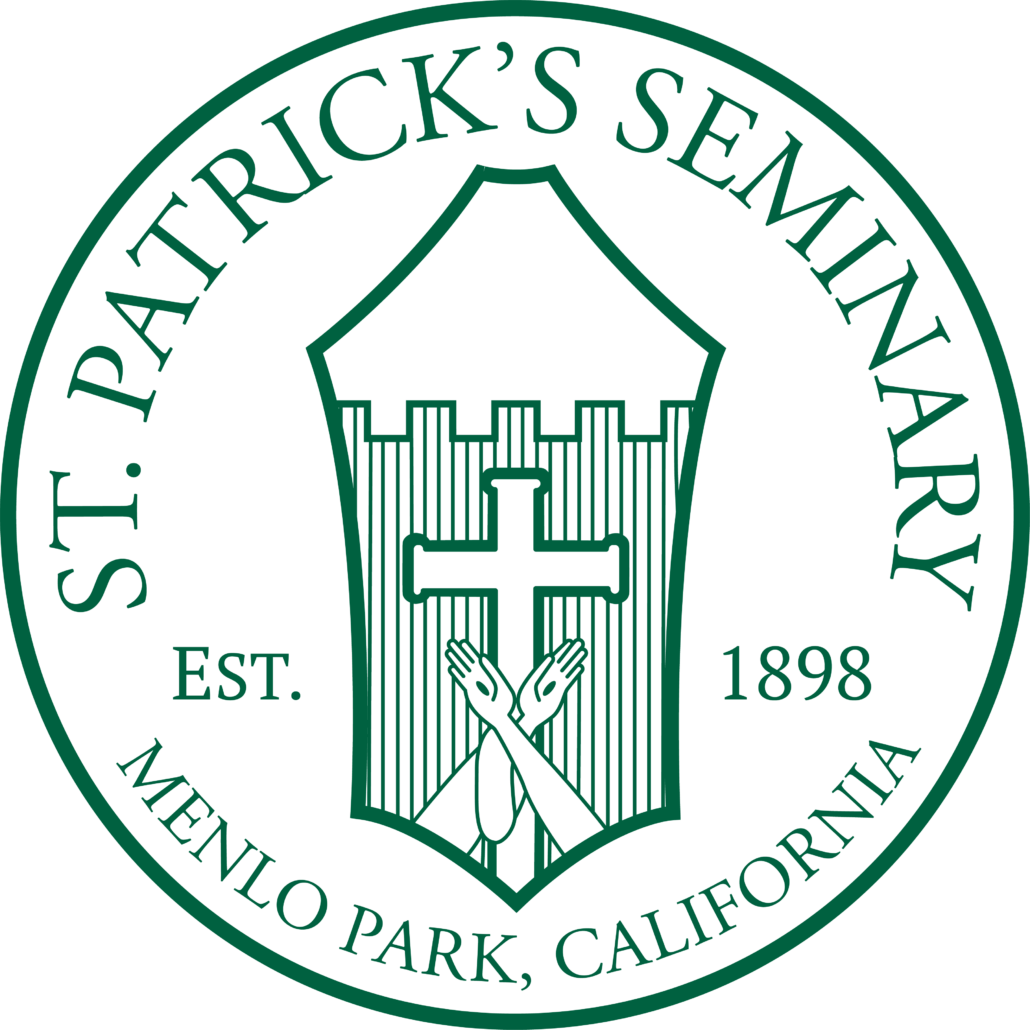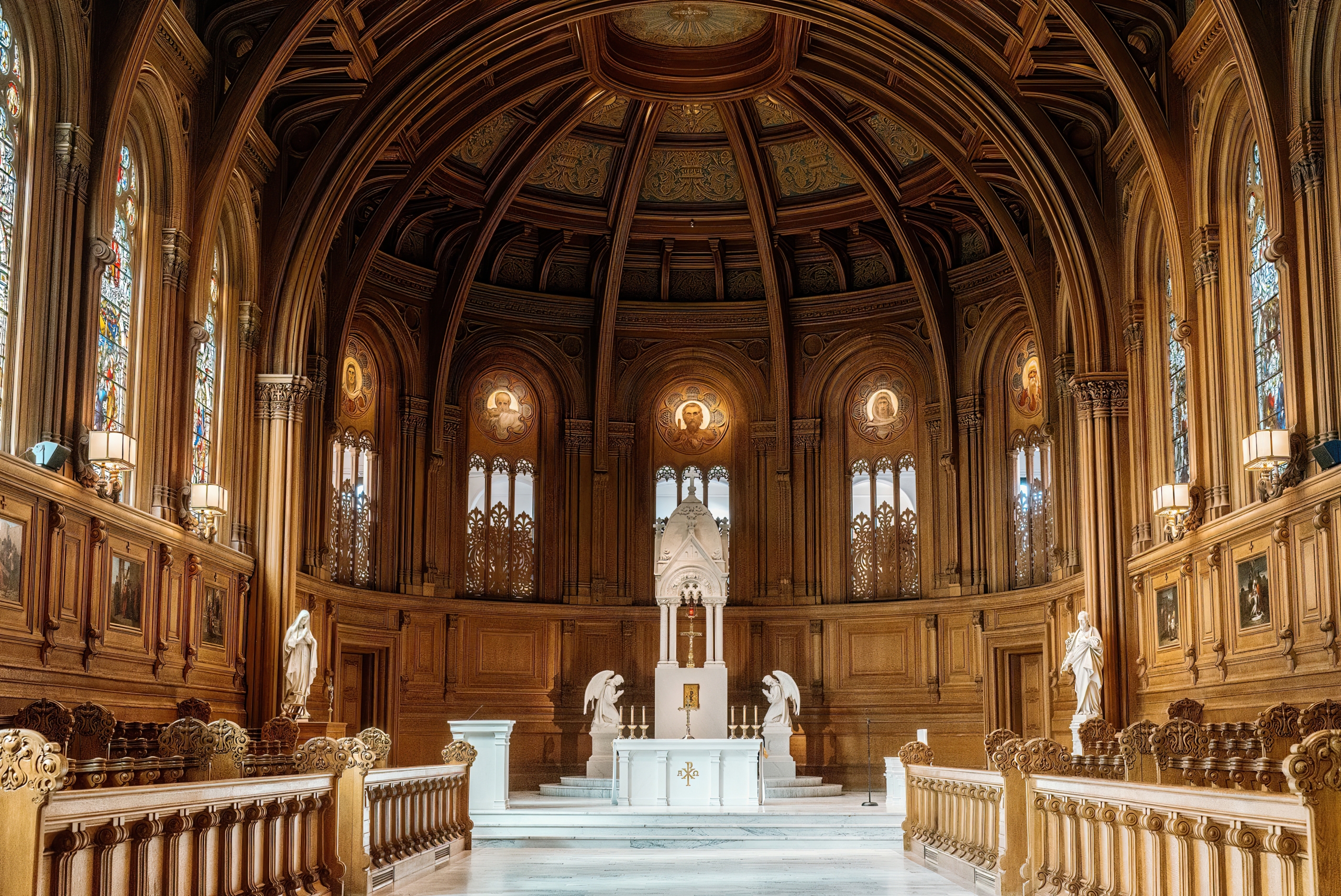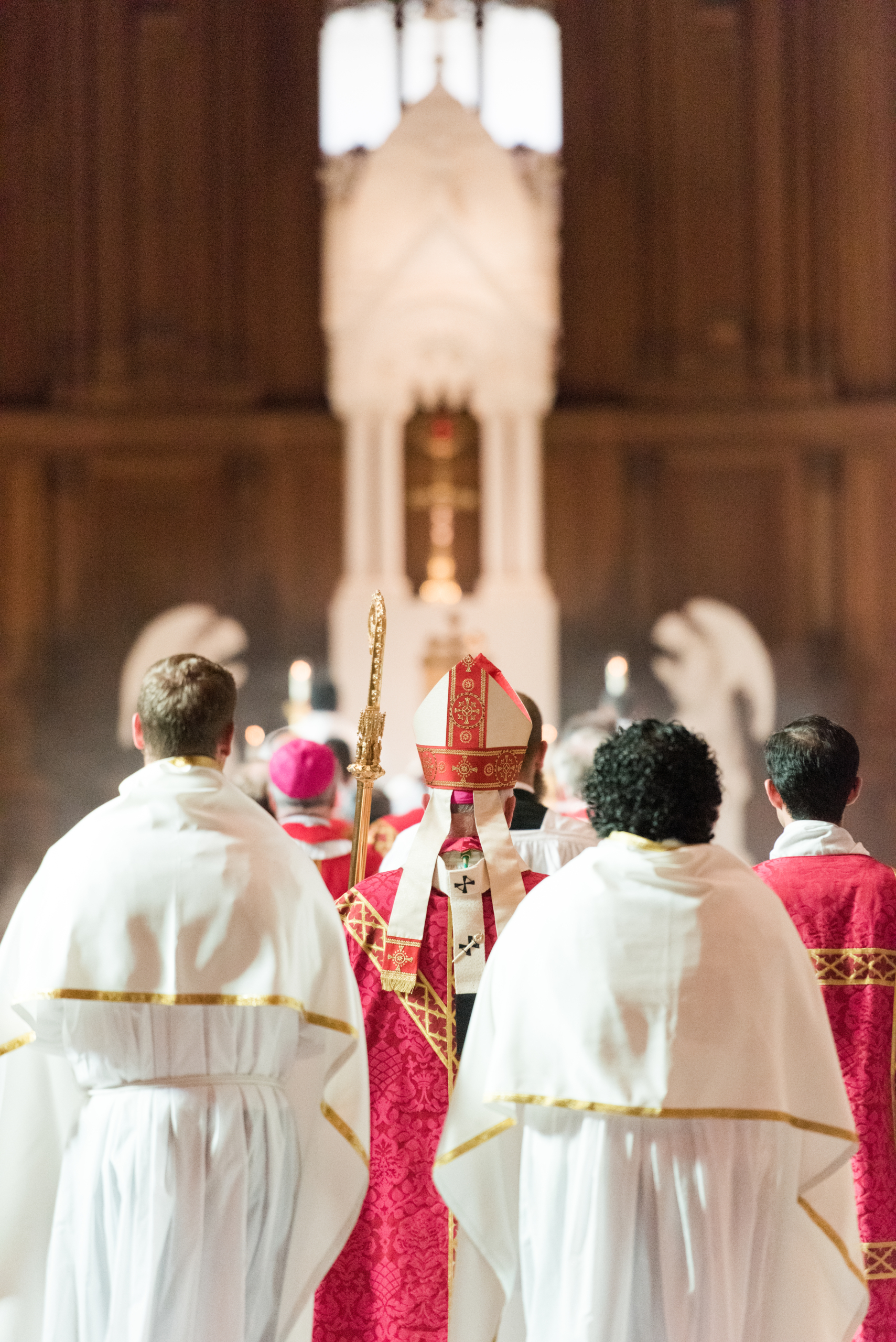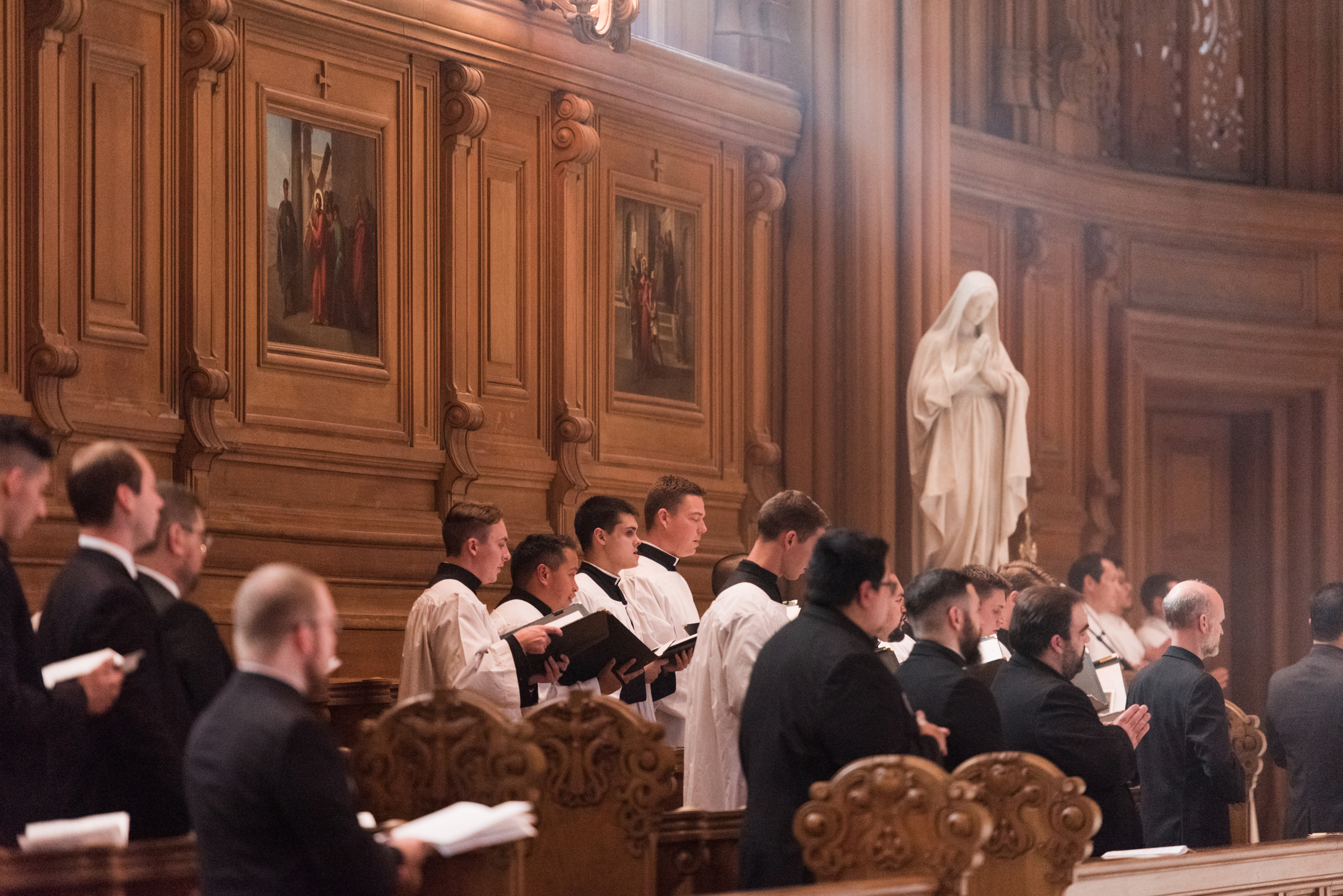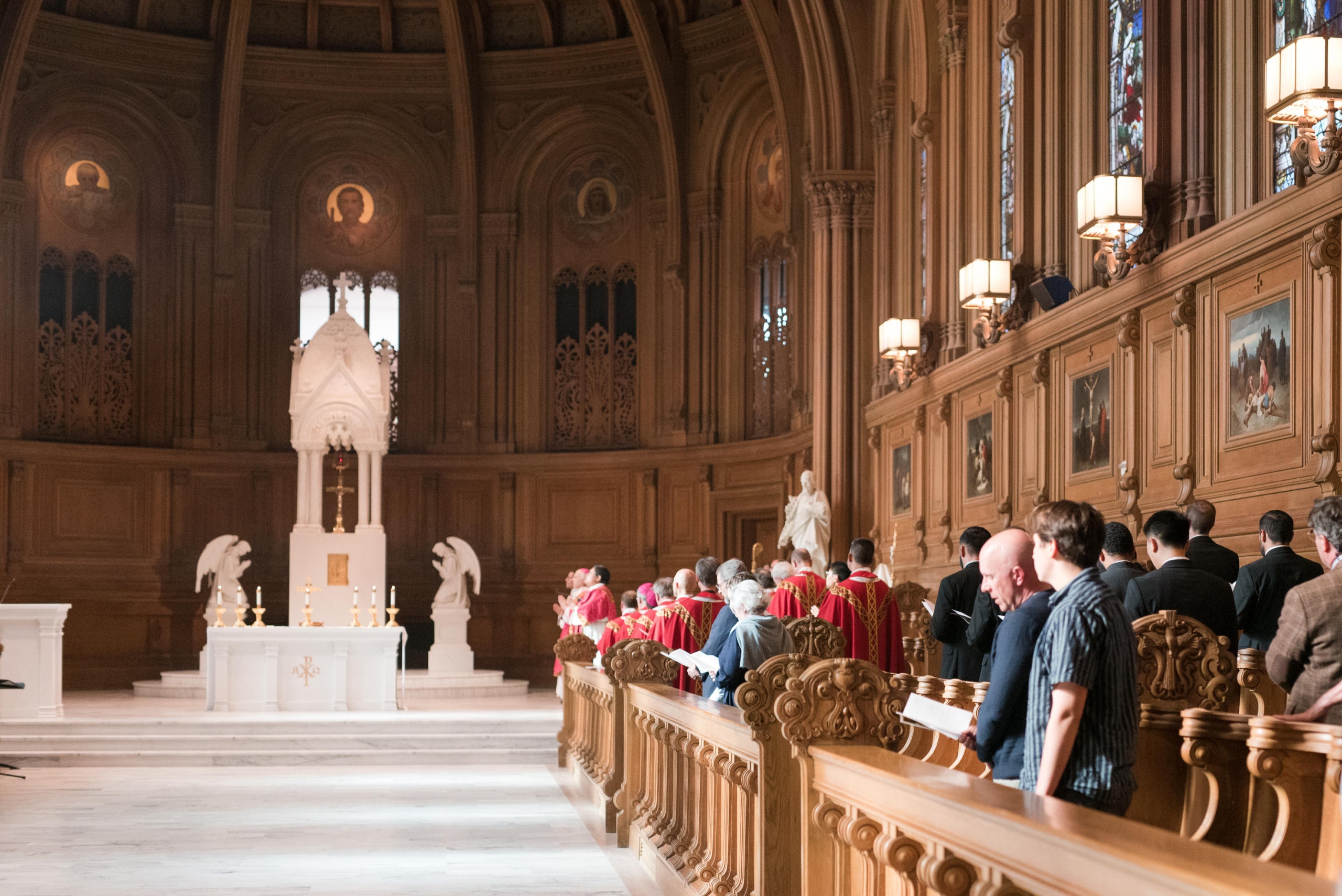The Chapel
The St. Patrick’s Seminary chapel is the heart of seminary life, and occupies the architectural center of the seminary buildings.
On entering the chapel, one is impressed by its spaciousness. There are no side chapels, no detractions from the effect that this chapel is what it is supposed to be: the chancel of a cathedral. The wide and unobstructed center of the chapel, banked on either side by three rows of choir stalls and the deep sanctuary, bring the altar into prominence and focus attention on it. The wainscoting covering the walls, the ribbed, coffered ceiling, and the stalls are made of oak of one warm tone. Everything of ornament is harmoniously designed.
The scenes and figures pictured in stained glass by Hardman & Co were selected to inspire aspirants to the priesthood. Ten windows represent the biblical story of the sacrifice of Jesus, beginning with the presentation of the infant Savior in the temple by His Mother and culminating in the entrance into Heaven of the great High Priest, offering his completed sacrifice to the Heavenly Father. The four windows near the entrance depict St. Francis of Assisi, patron of the Archdiocese; St. Patrick, patron of the seminary; St. Charles Borromeo, the founder of the modern seminary movement; and the Good Shepherd, the ideal of the true parish priest.
The Stations of the Cross, fine canvases of subdued but distinct color and detail, are encased in the wainscoting. Around the sanctuary, set in between the arches of the grills, are portraits of the seven herald prophets of the Messiah, with John the Baptist in the center flanked by Moses, Daniel, Isaiah, Jeremiah, Ezekiel, and David. Their presence provides the theological key to the message of the entire chapel decoration: in the words of St. Augustine, “The new covenant is hidden in the old, the old is revealed in the new.”
On the rear wall of the chapel, behind the screen of the great ornamental organ pipes is the painting representing Christ, the Light of the World, and the life-giving diffusion of His blood to all the nations of the earth, importing the mission of priests.
Two well-modeled statues of the Blessed Mary and St. Joseph stand on either side against the pilasters that mark the outer confines of the sanctuary. These, together with such other ornamental designs as the massive carved stall ends, the lighting brackets, the coloring of the ceiling panels, all blend quietly to give a unity that makes a deeply religious atmosphere and a dignified dwelling place for the Lord, the High Priest of the Seminary.
—Jeffery M. Burns, from St. Patrick’s Seminary: A Centenary History
